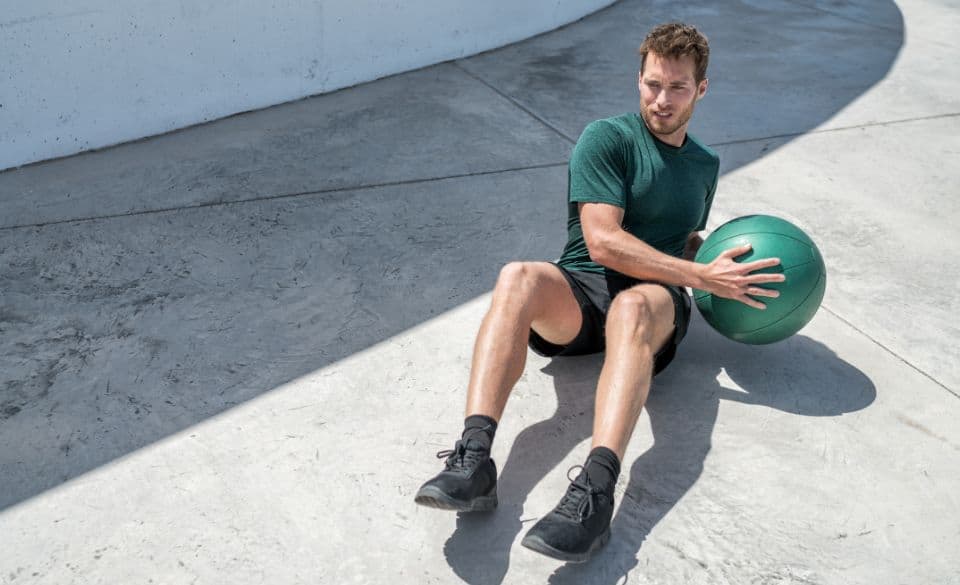
Essential Core Exercises for Every Runner
Page Contents
Are you an avid runner looking to improve your performance and prevent injuries? If so, then you’re in the right place! In addition to focusing on your cardiovascular fitness and lower body strength, it’s crucial to give attention to your core muscles. Your core acts as a stabilizer while running, helping you maintain proper form and reducing the risk of injuries. In this article, we’ll explore some essential core exercises that every runner should incorporate into their training routine.
The Benefits of Core Exercises for Runners
Now that we’ve covered some essential core exercises for runners, let’s delve into the benefits that these exercises provide. Strengthening your core offers numerous advantages that can greatly enhance your running performance and overall fitness.
Improved Running Form and Efficiency
A strong core plays a vital role in maintaining proper running form. When your core muscles are weak, you may experience excessive movement or rotation in your torso, which can lead to inefficiencies in your stride. By strengthening your core, you’ll improve your stability and control, allowing you to maintain a more upright posture while running. This, in turn, helps optimize your stride length and cadence, leading to improved running efficiency and speed.
Injury Prevention
One of the most significant benefits of core exercises for runners is injury prevention. Running is a high-impact activity that places stress on various joints and muscles throughout your body. A weak core can contribute to imbalances and poor movement patterns, increasing the risk of injuries such as lower back pain, hip issues, and knee problems.
By incorporating core exercises into your training routine, you’ll develop stronger and more stable muscles around your spine, pelvis, and hips. This increased stability helps distribute the forces generated while running more efficiently, reducing the strain on individual joints and muscles. As a result, you’re less likely to experience overuse injuries or muscular imbalances, allowing you to enjoy a healthier and more sustainable running practice.
Enhanced Endurance
Endurance is a key component of successful running, especially for longer distances. Your core muscles act as a powerhouse, providing stability and support for your entire body as you log those miles. When your core is weak, it can easily fatigue, leading to a breakdown in form and reduced endurance.
By engaging in regular core exercises, you’ll build endurance in these crucial muscles. As your core becomes stronger, it can better withstand the demands of distance running, helping you maintain proper form and energy efficiency throughout your runs. This increased endurance translates into improved performance, allowing you to go the extra mile and reach your running goals.
Increased Power and Speed
A strong core not only aids in stability and endurance but also contributes to increased power and speed. The core muscles act as a bridge between your upper and lower body, transferring force and energy during running. When your core is weak, power generation and transmission become compromised, limiting your ability to generate explosive movements and maintain a fast pace.
Planks: A Solid Foundation for a Strong Core
When it comes to core exercises, planks are an absolute must. This simple yet effective exercise engages multiple muscle groups, including your abdominals, lower back, hips, and shoulders. To perform a plank, start by getting into a push-up position, resting on your forearms instead of your hands. Your body should form a straight line from your head to your heels. Hold this position for as long as you can, aiming for at least 30 seconds to start with, and gradually increasing the duration over time.
According to a study published in the Journal of Strength and Conditioning Research, planks activate the deep core muscles more effectively than traditional sit-ups or crunches. By strengthening your deep core muscles, you’ll improve your running posture and stability, reducing the risk of injuries caused by improper form.
Russian Twists: Building Rotational Strength
As a runner, you need to generate power and stability through your core while rotating your upper body. Russian twists are a fantastic exercise for developing rotational strength. To perform a Russian twist, sit on the ground with your knees bent and feet lifted off the floor. Lean back slightly, maintaining a straight back, and extend your arms in front of you. Rotate your torso to one side, touching the ground with your hands, and then rotate to the other side.
A study published in the Journal of Sports Science and Medicine found that Russian twists significantly improved the rotational strength and endurance of the core muscles. By incorporating this exercise into your routine, you’ll enhance your ability to transfer energy from your lower body to your upper body while running, resulting in a more efficient stride.
Dead Bugs: Stability and Coordination
While running, maintaining stability and coordination is crucial for optimal performance. Dead bugs are a fantastic exercise that targets your core muscles while challenging your stability and coordination. To perform this exercise, lie flat on your back with your arms extended toward the ceiling and your legs bent at a 90-degree angle. Slowly lower one arm overhead while straightening the opposite leg, keeping your lower back pressed against the floor. Return to the starting position and repeat on the opposite side.
A study published in the International Journal of Sports Physical Therapy found that dead bugs effectively activate the deep core muscles, improving stability and coordination. By incorporating this exercise into your routine, you’ll develop better control over your body movements, leading to a smoother and more efficient running gait.
Bicycle Crunches: Engaging Multiple Muscle Groups
Bicycle crunches are a dynamic exercise that engages multiple muscle groups, including your rectus abdominis, obliques, and hip flexors. This exercise mimics the pedaling motion of a bicycle and provides a great overall core workout. To perform bicycle crunches, lie on your back with your hands behind your head and your legs raised off the ground. Alternate bringing your right elbow towards your left knee while extending your right leg, and then switch to the opposite side.
A study published in the Journal of Orthopaedic & Sports Physical Therapy found that bicycle crunches activated the external obliques and rectus abdominis muscles significantly more than other popular core exercises. By incorporating bicycle crunches into your routine, you’ll strengthen your core and improve your ability to stabilize your body during running, leading to better performance and injury prevention.
Additional Core Exercises to Consider
In addition to the core exercises mentioned earlier, there are several other exercises that can further enhance your core strength and stability as a runner. Let’s explore a few more options that you can incorporate into your training routine.
Mountain Climbers: Dynamic Core Engagement
Mountain climbers are a fantastic exercise that not only targets your core but also adds a cardiovascular element to your workout. Start in a high plank position with your hands directly under your shoulders. Drive one knee toward your chest and then quickly switch to the other knee, mimicking a running motion. Continue alternating knees in a rapid and controlled manner.
Mountain climbers engage your core muscles while also working your shoulders, arms, and legs. This dynamic exercise helps improve coordination, endurance, and overall core stability, making it a valuable addition to any runner’s routine.
Side Planks: Focused on Stability and Balance
Side planks are a variation of the traditional plank exercise that specifically targets the obliques and lateral core muscles. Start by lying on your side with your elbow directly under your shoulder and your legs extended, stacking one on top of the other. Lift your hips off the ground, creating a straight line from your head to your feet. Hold this position for as long as you can, maintaining proper alignment and engaging your core.
Side planks help improve lateral stability and balance, which are essential for maintaining proper running mechanics. By strengthening your obliques, you’ll enhance your ability to resist rotation and side-to-side movements, reducing the risk of injuries caused by excessive twisting during running.
Superman Pose: Back Strengthening
While many core exercises focus on the abdominal muscles, it’s important not to neglect the muscles in your lower back. The superman pose is a simple yet effective exercise for strengthening your lower back and improving core stability. Start by lying face down on the floor with your arms extended overhead and your legs straight. Lift your arms, chest, and legs off the ground simultaneously, squeezing your glutes and engaging your lower back muscles. Hold this position for a few seconds before lowering back down.
A strong lower back is crucial for maintaining proper running posture and reducing the risk of lower back pain. By incorporating the superman pose into your routine, you’ll target the muscles that help support your spine and promote a balanced and stable core.
Stability Ball Exercises: Added Challenge and Balance
If you’re looking to take your core training to the next level, incorporating stability ball exercises can provide an extra challenge. Exercises such as stability ball rollouts, pikes, and bridges can all be performed using a stability ball to engage your core muscles in a dynamic and unstable environment. These exercises require you to activate additional stabilizer muscles, enhancing your balance and overall core strength.
When using a stability ball, it’s important to choose the right size ball that allows you to maintain proper form and control throughout the exercises. Start with basic exercises and gradually progress to more advanced movements as you become comfortable with the instability of the ball.
Final Thoughts
A strong and stable core is essential for every runner, and there are numerous exercises to choose from to target your core muscles effectively. Planks, Russian twists, dead bugs, bicycle crunches, mountain climbers, side planks, superman poses, and stability ball exercises are just a few examples of the wide range of options available.
Remember to incorporate a variety of core exercises into your routine to engage different muscle groups and challenge your core from various angles. Building a strong core takes time and consistency, so be patient and gradually increase the intensity and duration of your workouts. With dedication and perseverance, you’ll develop a robust core that supports your running performance, enhances your overall fitness, and helps prevent injuries along the way. Happy running and happy core training!



